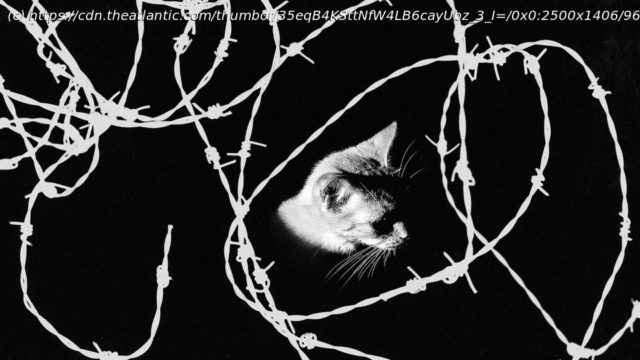How did pet abuse become such a theme of this campaign?
Why has this election season featured so many stories about animal cruelty? The 2024 campaign has contained many remarkable moments—the Democrats’ sudden switch from Joe Biden to Kamala Harris; the two assassination attempts on Donald Trump; the emergence of Elon Musk as the MAGA minister for propaganda; the grimly racist “America First” rally at Madison Square Garden. But the bizarre run of stories about animal abuse has been one of the least discussed.
In late October, the National Rifle Association was supposed to hold a “Defend the 2nd” event with a keynote address by Trump, but it was canceled at the last minute, because of what the NRA described as “campaign scheduling changes.” Here’s another possible reason: Earlier last month, the NRA’s new chief executive, Doug Hamlin, was outed as an accessory to cat murder.
In 1980, according to contemporary news accounts unearthed by The Guardian, Hamlin and four buddies at the University of Michigan pleaded no contest to animal cruelty following the death of their fraternity’s cat, BK. The cat’s paws had been cut off before it was set on fire and strung up, allegedly for not using the litter box. “I took responsibility for this regrettable incident as chapter president although I wasn’t directly involved,” Hamlin wrote in a statement to media outlets after the Guardian report appeared.
In April, Kristi Noem, South Dakota’s Republican governor, scuttled her chances of becoming Trump’s running mate when her memoir revealed that two decades ago, she shot her wirehaired pointer, Cricket, in a gravel pit after the puppy had attacked some chickens and then bit her. (“I hated that dog,” Noem wrote, adding that she later killed an unruly goat in the same spot.) More recently, during his only debate with Harris, Trump painted immigrants as murderers of American cats and dogs, repeating unsubstantiated internet rumors that Haitians in Springfield, Ohio, were eating “the pets of the people that live there.”
American political figures have long showcased their pets to humanize themselves—remember Barack Obama’s Portuguese water dogs, Bo and Sunny, and Socks, Bill Clinton’s cat? But the relationship between animals and humans keeps growing in salience as our lifestyles change. Domestic animals have moved from being seen as ratcatchers, guards, and hunting companions to pampered lap dogs that get dressed up as pumpkins on Halloween. Half of American pet owners say that their animals are as much part of the family as any human, and many of us mainline cute videos of cats and dogs for hours every week. These shifting attitudes have made accusations of animal abuse a potent attack on political adversaries—and social media allows such claims to be amplified even when they are embellished or made up entirely.
At the same time, we make arbitrary distinctions between species on emotional grounds, treating some as friends, some as food, and some as sporting targets. Three-quarters of Americans support hunting and fishing, and the Democratic nominee for vice president, Tim Walz, was so keen to burnish his rural credentials that he took part in a pheasant shoot on the campaign trail. Similarly, only 3 percent of Americans are vegetarian, and 1 percent are vegan, but killing a pet—a member of the family—violates a deep taboo.
Noem, who seemed to view Cricket purely as a working dog, was clearly caught off guard by the reaction to her memoir. “The governor that killed the family pet was the one thing that united the extreme right and the extreme left,” Hal Herzog, a Western Carolina University psychology professor who studies human attitudes toward animals, told me. “There was this moral outrage. She was just oblivious.”
Herzog, the author of Some We Love, Some We Hate, Some We Eat: Why It’s So Hard to Think Straight About Animals, has been interested in how people think about animal cruelty since he researched illegal cockfighting rings for his doctorate several decades ago.






